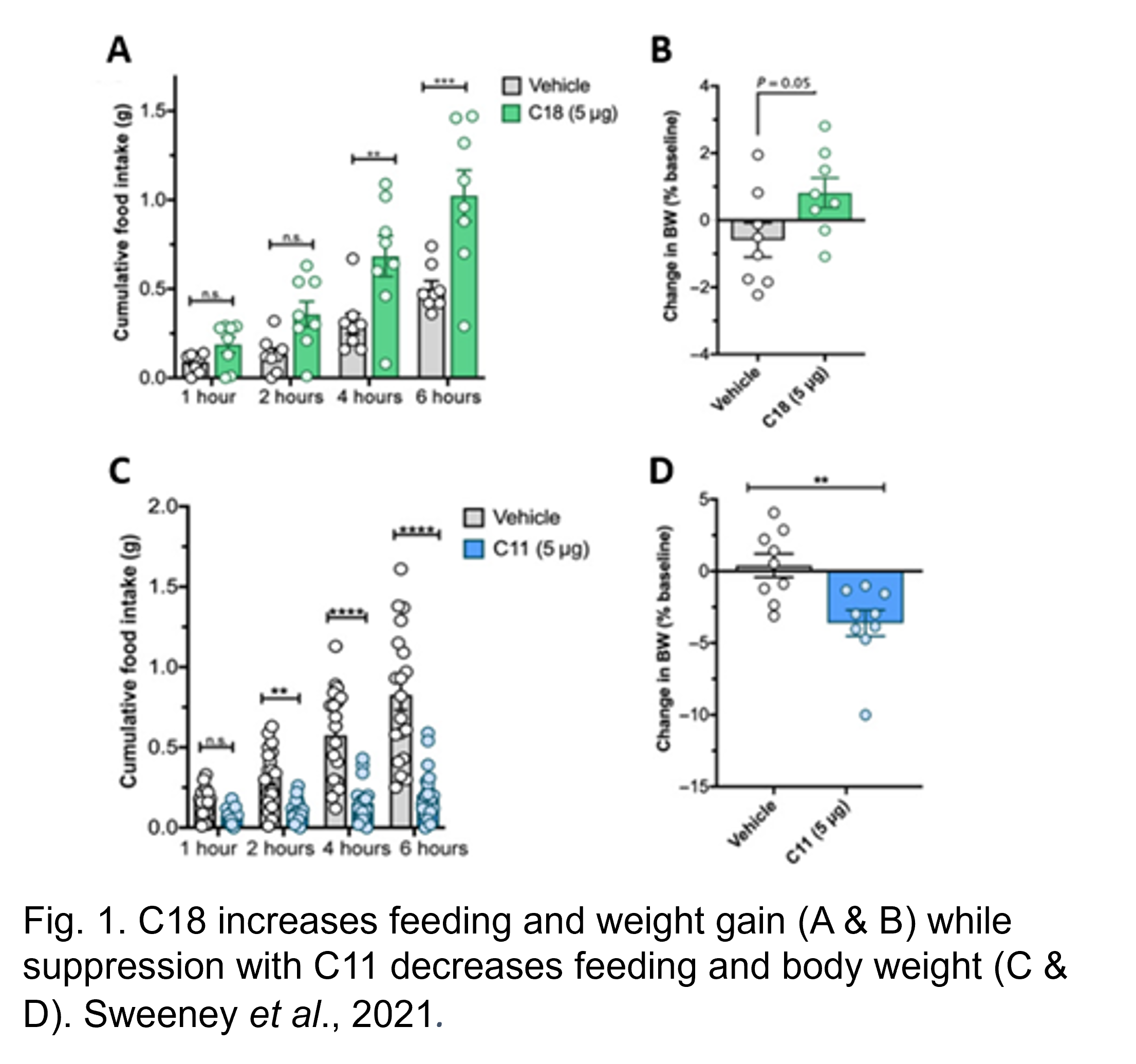Selective melanocortin receptor ligands
Potential dual-ligand approach to weight management

Applications
- Anti-obesity, weight-loss therapy
- Anti-anxiety
- Anti-anorexia-cachexia therapy
- MC3R ligands: address obesity; reduces appetite and anxiety
- MC3R ligands: effect on feeding, independent of behavioral stress, does not show sexual dimorphism
- License
- Sponsored research
- Co-development
- Carrie Haskell-Luevano, PhD Professor, Department of Medicinal Chemistry
Key Benefits & Differentiators
Technology Summary
Obesity is an epidemic in the United States where 42% of adults are obese leading to about 300,000 deaths per year. The socio-economic burden of obesity is nearly $1.4 trillion. Cachexia associated with chronic illnesses such as cancer, heart failure (HF), kidney disease (CKD), and chronic obstructive pulmonary disease (COPD) remains unaddressed. Annually, over 160,000 people are admitted into hospital due to cachexia. Cancer patients often suffer from cachexia which negatively impacts their quality of life. Annually, mortality rates of patients with cachexia range from 10 to 15 % in COPD, 20–30 % in chronic HF and CKD to 80 % in cancer. These eating disorders present a significant unmet clinical need for efficacious treatments.
Seeking therapeutic solutions for these disorders, researchers at the University of Minnesota developed a tetrapeptide scaffold [Ac-Xaa1-Arg-(pI)DPhe-Xaa4-NH2] used to design compounds that bind specifically to MC3R. MC3R plays a critical role in controlling appetite and mediating weight and is an attractive target for new therapies. Two MCR3 modulators, C18 agonist and C11 antagonist, were examined in mice for their ability to regulate feeding behavior. C18 or C11 were administered intracerebroventricularly and showed that C18 stimulated food intake and reduced anxiety-related behavior. Conversely, the C11 suppressed food intake and reduced weight gain (Fig. 1). Taken together, the MC3R bidirectionally regulated feeding C18 or C11 are potential therapeutic molecules for eating disorders.
Phase of Development
TRL: 4-6In vivo mouse evaluation
Desired Partnerships
This technology is now available for:Please contact our office to share your business’ needs and learn more.
Researchers
Licensing Terms
| MN-IP Try and Buy |
|---|
Try
|
Buy
|
-
expand_more library_books References (2)
- Doering, S.R., Freeman, K.T., Schnell, S.M., Haslach, E.M., Dirain, M., Debevec, G., Geer, P., Santos, R.G., Giulianotti, M.A., Pinilla, C. and Appel, J.R , Discovery of Mixed Pharmacology Melanocortin-3 Agonists and Melanocortin-4 Receptor Tetrapeptide Antagonist Compounds (TACOs) Based on the Sequence Ac-Xaa1-Arg-(pI)DPhe-Xaa4-NH2, Journal of medicinal chemistry
- Sweeney, P., Bedenbaugh, M.N., Maldonado, J., Pan, P., Fowler, K., Williams, S.Y., Gimenez, L.E., Ghamari-Langroudi, M., Downing, G., Gui, Y. and Hadley, C.K , The melanocortin-3 receptor is a pharmacological target for the regulation of anorexia, Science Translational Medicine
-
expand_more cloud_download Supporting documents (1)Product brochureSelective melanocortin receptor ligands.pdf